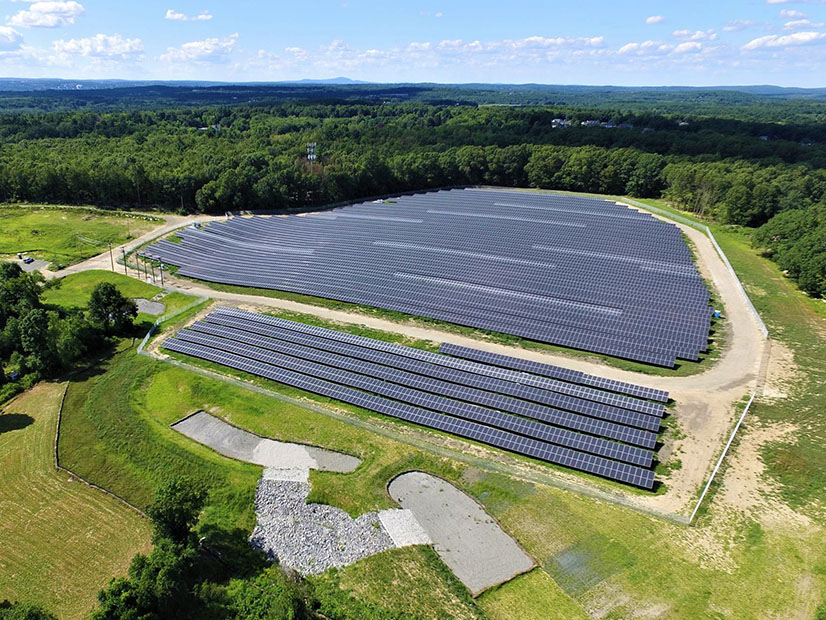
Developer BlueWave Solar has a vision for Maine’s solar market to support farmland preservation, economic opportunity, healthy communities and access to food, and Drew Pierson, the company’s head of sustainability, sees one strong approach for getting there.
Between dual-use solar incentives, regulatory mechanisms and voluntary approaches, Maine “has a golden opportunity to demonstrate how a voluntary dual-use market could function and what it could look like,” he said in a presentation to the Maine Agricultural Solar Stakeholder Group on Thursday.
The market could go beyond just pairing solar with a single agricultural use to combine a variety of land management philosophies and rooting them in conservation and agriculture to create a multifunctional system, he said. Realizing that vision, he added, requires building “well crafted partnerships that involve a variety of people from different disciplines and sectors.”
The Maine Department of Agriculture, Conservation and Forestry and the Governor’s Energy Office convened the stakeholder group this year to look at solar energy development on agricultural lands and develop policy recommendations for the sector. A report is due from the group in January.
Demonstrations
BlueWave developed its first agrivoltaic project in Maine on a voluntary basis through a partnership with a farmer in Rockport, according to Pierson.
“There’s no [per-kilowatt-hour financial] incentive, but we felt strongly that this was the right tone to set in entering this market,” he said.
A five-year study on 5 acres of the 4.2-MW project will enable the University of Maine to understand the effects of installing and maintaining a solar array in an existing blueberry crop.
“Recognizing that construction comes with costs, we want to get a sense of [how long it takes] a blueberry bush … to recover from the variety of different construction practices,” Pierson said.
The research team also will measure the environmental conditions on the site and look at the physiological responses of blueberries to the presence of the solar array.
In addition, the blueberry grower adjusted his cultivation practices so he could more easily navigate the array, he said.
The company is developing a solar project in Benton that Pierson says would repeat the Rockport model. Of the 32-acre solar field, 5 acres would be for a crop trial and 27 would be for sheep grazing.
“We’re hopeful that we can create an on-ramp for a farmer who is willing to test and demonstrate what a profitable and scalable farm plan could look like,” Pierson said.
BlueWave has another project that demonstrates the agrivoltaic development approach through an incentive structure in Massachusetts. The company developed a 3.1-MW solar array on a family farm in Grafton to qualify for the Solar Massachusetts Renewable Target program, which offers a 6-cent/kWh adder for solar projects on land designated for agricultural purposes.
“The project is going to be hosting research ground crops and rotational grazing of cows for beef,” he said. “We’re building on-site infrastructure, including water, an irrigation system, an animal shelter and fencing to facilitate the operation.”
Welcome Mat
If Maine sets standards for solar and agricultural practices, the standards could support the growth of a volunteer market approach in the state.
The Maine Department of Environmental Protection could establish a solar grazing standard, for example, and it could “influence how solar grazing happens across the industry,” Pierson said.
And a standard for solar project design, he added, could ensure that farmers are allowed on the site property under certain conditions.
“Maybe they just need a welcome mat,” he said. Strategic farm plans that are “locally relevant, profitable and scalable” would encourage farmers to take on a certain amount of risk.
If farmers understand the economic model of agrivoltaics and they see it working in existing projects, Pierson said his hope is that they wouldn’t need a subsidy to convince them to enter a solar partnership.
The Agricultural Solar Stakeholder Group will meet again on Nov. 18 and Dec. 16 before delivering its final report to the Maine Legislature.


